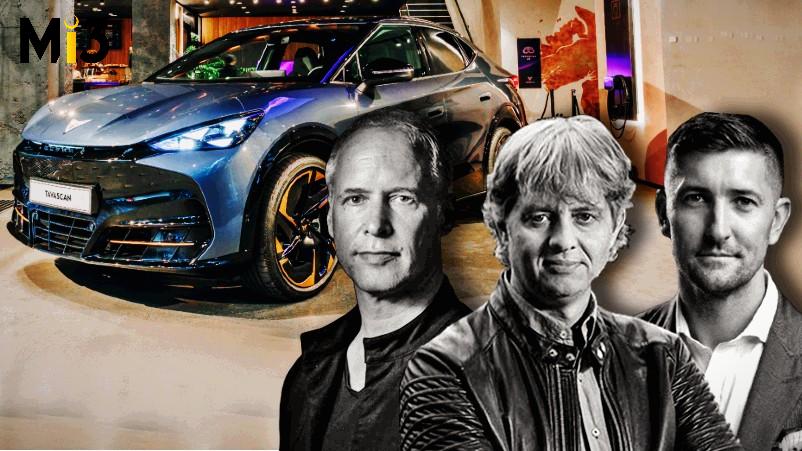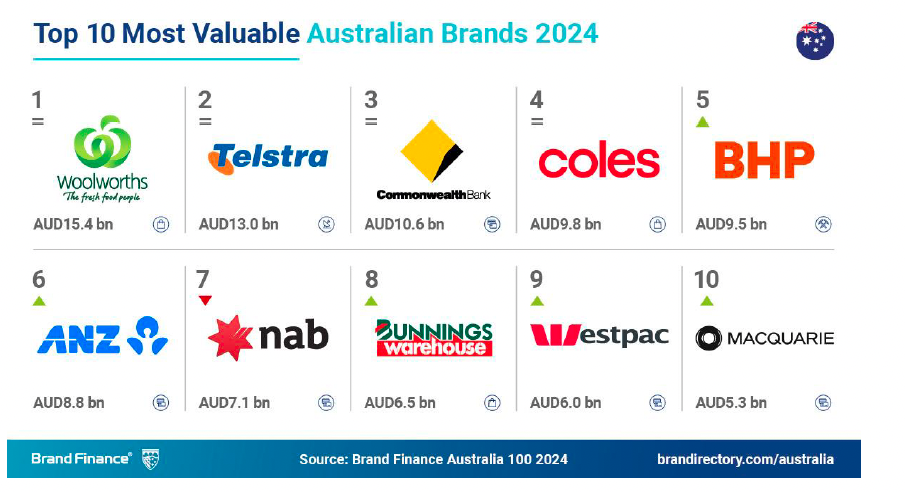Performance marketing: Cupra power trio plot 7-second burn through auto market, back distinctiveness to skew younger, hit early speed humps

What you need to know:
- Six years after launching and two years after debuting in the Australian market, Spain’s Volkswagen-owned car brand, Cupra, is building its presence as a niche brand driven not by legacy, heritage or luxury, but by a desire to serve consumers who still enjoy driving rather than being driven.
- After a solid first year in the local market and hitting its first 1,000 hybrid plugin sales, Cupra has since had to pare back forecasts of 7,000 annual car sales in 2024. Global EVP of marketing, sales and aftersales Sven Schuwirth cites tough macros, Australia’s highly competitive automotive market, and regulatory factors directly influencing EV and hybrid vehicle uptake.
- With a vision to be loved or hated – not just liked – the company’s global brand, marketing and Australian director all claim it’s hit a sweet spot with a psychographic rather than demographic set of customers that’s driven by a love of design, a desire to do something different and a wish to express themselves differently through their choice of vehicle. For example in Europe, a more mature market, it’s peaking in terms of design as a reason to purchase a Cupra car, plus emotional criteria such as performance attributes.
- As a key marketing strategy, Cupra is overindexing on cultural pursuits – sports, music, film – plus harnessing the power of ambassadors and influence to build a tribal set that is emotionally connected to its brand.
- Cupra claims to have a buyer that’s 8-10 years younger on average than the rest of the car market as a result.
Love-hate relationship
Cupra has no heritage, no legacy and no set demographic – and the team behind the brand are very comfortable with that fact.
“We don’t actually want to be liked by everyone, but we want to be loved by some people,” says Cupra Australia director, Ben Wilks, on how the six-year-old car brand is striving to make its mark. “Coming from a marketing background, that gives you enormous permission to be able to position something in a specific way. That’s actually super exciting. It means we can make choices with our creative to be more progressive and interesting in what we say.”
According to Cupra’s chief brand officer, Ignacio Prieto, and EVP of sales, marketing and aftersales, Sven Schuwirth, the Volkswagen-owned, Spain-based car maker is crafting a contemporary brand – not a volume, mass market, luxury or premium one. The pair claim Cupra buyers are 8-10 years younger than market average as a result. Cupra vehicle prices range between $45,000 – $85,000.
“We don’t have any heritage and we don’t have any legacy, which is an opportunity,” Schuwirth tells Mi3. “We are thinking about positioning a brand for the upcoming, next generation. It’s a completely different audience – an audience which is still in love with driving, not getting driven.”
Inspired by the traits of its home city of Barcelona, the brand is built on three key pillars: Design, performance and challenging convention. Its debut in the Australian market two years ago, arguably the most intense and competitive car marketplace in the world, is among early international expansion steps for Cupra before eventually making its way into the US market.
According to Vfacts – which logs monthly new car registrations – national new vehicle sales data to December 2023 put Cupra in 37th place on Australia’s car brand list for sales, chalking up 3,765 new vehicle sales, a 43.1 per cent rise on its first year. Globally, Cupra sold 230,000 cars in 2023.
Local sales have been tempered somewhat this year, however. As at May 2024, Cupra was tracking at about 250 car sales per month, a -3.8 per cent month-on-month variance and -18.6 per cent year-to-date drop. In June, vehicle sales were down -27.5 per cent year-to-date in a month where overall Australian car sales were down 4.2 per cent against June 2023, but still represented the second-highest month since 2019. This put Cupra down 57.9 per cent on June 2023 figures.
By contrast, there was an 8.7 per cent increase in new vehicles sold in Australia in the first half of 2024 to 632,412, surpassing a previous record of 605,522 sales in the first six months of a very different looking 2018. EVs in June accounted for 8 per cent of new car sales, while hybrid vehicles and plug-ins accounted for 14.4 per cent combined, compared to 7.8 per cent in June 2023.
Having initially forecast 7,000 annual unit sales by 2025 locally, and a future aim of 2-3 per cent share in the markets it’s active in, Schuwirth says sales expectations in Australia are being pared back given the competitive set and spending, interest rate rises, and, he suggests, impact of regulation on EV and hybrid uptake. Cupra just hit 1,000 plug-in hybrids on the road. Formentor is the best selling model for Cupra in Australia but in 2024 the VZe (PHEV driveline) has overtaken VZx (228kW ICE driveline) as the highest mix, representing 25 per cent of total volume year to 31 July.
“We need to remain flexible and keep our target and objective in mind, which is being a relevant player in the market but not one of the top 10,” Schuwirth says.
“We have much better data based on Europe, but it’s also true for the Australian market, where we have a 2-3-year gap. In Europe, we’re peaking quite well in terms of design as a reason to purchase the car, so that’s a tick in the box. We are also peaking well on some emotional criteria on buying our car, like performance attributes: We are second best in Europe after Porsche.”
Which is perhaps no surprise, given Cupra’s heritage: It was the performance and motorsport offshoot of Barcelona-based Seat, acquired in 1986 by Volkswagen Group. Seat Cupra models were top of the line, high performance Seat variants until 2018, when Volkswagen made Curpa its own brand. Last year the group said it would discontinue making Seat vehicles, with Cupra instead carrying the group’s Spanish flag.
But it’s not been plain sailing with some initial issues around product reliability, which Schuwirth says Cupra worked hard to overcome and resolved in its latest generation of cars.
Meanwhile, “when it comes to awareness, we are still operating on a comparably low level, especially in the Australian market, but that’s a story of time,” adds Schuwirth. “Bear in mind we don’t want to become a massive volume brand and we don’t need to have awareness levels like Volkswagen. It’s more relevant to be desired by our target audience.”
We don’t have any heritage and we don’t have any legacy, which is an opportunity. We are thinking about positioning a brand for the upcoming, next generation. It’s a completely different audience – an audience which is still in love with driving, not getting driven.
The sweet spot
Which brings us to the question of who Cupra is going after. The target consumer is not a demographic but psychographic set aligned to an unconventional and emotionally inspiring brand, says Prieto. He cites a customer driven by a love of design, the desire to do something different, and to be able to express themselves in a way other people aren’t.
To achieve this connection, Cupra has prioritised sports partnerships, including sponsoring Barcelona Football Club – male and female – as well as the Socceroos and Matildas in Australia. In addition, Cupra sponsored this year’s America’s Cup in Barcelona, a contest reflecting the performance and innovation characteristics it’s keen to manifest as a brand, Prieto says.
“We have a commitment to improve every day – we see it like a bit of a competition,” he comments.
Music is another cultural affiliation Cupra aims to make the most of, and it’s been sponsoring music festivals globally including Germany’s Parookaville electronic music weekend, plus Barcelona’s Primavera Sound. Film is another territory, and Cupra introduced Spanish film director JA Bayona as an ambassador in its latest Formentor e-Hybrid car campaign.
Then there’s the heavy emphasis on building a tribe. Ambassadors for Cupra helping deliver this cultural connection include FC Barcelona football players Marc-Andre ter Stegen and Alexia Putellas, plus actor Daniel Bruhl and urban artist, TvBoy. For Prieto, each ambassador pushes boundaries and embodies Cupra’s core values of passion, determination and high performance.
There’s also an extension into more overt design partnerships and merchandising being realised, including with Barcelona-based Masset, which designs interior lamps.
“What makes us different is these people are all meeting those emotional criteria on why I go for Cupra, not for another brand,” says Schuwirth. “We have very design and performance-oriented customers.”
It's actually our CFO who describes our target audience best: It's not a next generation, or necessarily about youth, it’s a new generation. It's about people who have a new and progressive way of thinking about the market. In an organisation where the CFO is driven in that way speaks volumes about what Cupra’s about.
Global vs. local
As local director, Wilks acknowledges it’s “an interesting time” to be a new brand in Australia’s automotive market. Chinese entrants such as MG and global-leading EV maker, BYD, are changing the car landscape. Regulatory changes and fringe benefit taxes that have favoured purchasing electric and hybrid vehicles – but could be restricted by April next year – are further reshaping purchasing patterns.
“That’s one of the reasons why Cupra chose Australia as its first market really outside of South America and Europe to put the brand to the test,” Wilks comments. “A big part of that is proving in a really highly competitive market like this that the recipe can work.”
It’s therefore more important than ever to stand for something as a brand. “If you don’t identifiably stand for anything then you’re just lost in the wash with all of that,” says Wilks.
For the former Volkswagen Australian marketing chief, there’s a “wonderful tension” in global brands finding a way of positioning in a local market to navigate too. Schuwirth calls Cupra’s playbook “consistent brand steering without being uniform – unlike some well-established, premium luxury brands are”.
“You want to have a brand that’s recognisable in the same ways, but you need to have a connection with the people in the market you’re talking to,” Wilks continues.
Which is what Cupra’s tried to do with its city garages – they’re all slightly different. In Australia, they include coffee baristas and earthy tones to reflect local tastes and history, but “you should still have this feeling of being in our living room / racing garage / culinary area”, says Wilks. For its Sydney garage, Cupra struck a partnership with Benzin Coffee, which boasts a strong connection into local automotive culture. To date, Cupra has established 12 points of sale and 14 points of service nationally, and is aiming for 20 retail outlets by end of 2025.
As to other local marketing initiatives, Wilks again points to Cupra’s emphasis on individual influencer-level marketing and people “who are potentially brands themselves working together as brands”.
“But we’re also doing it openly from a company point of view. For a car company, we’re very open about our products and at a management level. You can hear from our designers, engineers, our sales and marketing teams, who are quite vocal all the time about what it is that we’re trying to create,” Wilks says.
“The whole story of Cupra begins basically in the race workshop at the back of the factory of Martorell and a group of people gathered to talk about how to take this concept of fun-to-drive and sporty cars into this new age of electrification.
“It’s actually our CFO who describes our target audience best: It’s not a next generation, or necessarily about youth, it’s a new generation. It’s about people who have a new and progressive way of thinking about the market. In an organisation where the CFO is driven in that way speaks volumes about what Cupra’s about.”
Wilks recognises people knowing about Cupra and building brand awareness is important. “Yet we want to be quite targeted because we ultimately want to be a niche brand with a market share goal of 1 per cent, maybe a little bit more, but that’s the long-term goal,” he says.
“To achieve that, we have to have people know about us. But we also have to be really selective in where we are and how we target. One of the things we did initially was the partnership with Football Australia with Socceroos and the Matildas in what has been a beautiful time for the Matildas.
“But it’s also about how you interact with that community, activate for that community and work with people who are part of that community. From the start, we partnered with Socceroos’ Andrew Redmayne and Matildas’ Mary Fowler – coming back to that kind of individual and tribe approach. Having that connection to those ambassadors allows us to dive into the space a little bit more.”
Another way Wilks believes Cupra is unlike other car companies is its openness about the future product roadmap. “The Tavascan was originally shown back in 2019 as a concept car, then finally in 2022 as a production car,” he says. The car’s official arrival in Australia isn’t until December this year.
Customer feedback
Another part of the puzzle is regular customer contact, and Cupra is running customer forums around Australia to understand how its first buyers are experiencing the cars. One area of friction identified was the online finance and purchasing process.
“Frankly, not everything went perfectly with the purchase process. We’ve got an online purchase process and an online finance application process that at the start was difficult,” Wilks says.
Modifications to make it smoother and quicker for customers to purchase have since been made. As part of its offering, Cupra, like other carmakers, is guaranteeing future value of cars at the end of a lease period – which is especially important given residual value issues for electric vehicles. In Europe and the UK, these have dipped dramatically as cars make their way en masse from novated business leases with significant company car tax benefits into the secondhand market.
“We’ve got to understand from our customers at scale what they’re experiencing so we can then really dig in and say, okay, here are the things customers love and let’s make sure we emphasise that, bring those stories to everybody. And here are the things customers would like to see happen in a different way. Then have a really direct contact with and get deep into a qualitative view on what that looks like,” Wilks adds.
Consolidation, where next
2024 was very much a consolidation year for Cupra in Australia as it launched its first range of cars including the Leon, Ateca and Born models.
Five new models / variants are slated for arrival by the end of 2025, commencing with the mid-sized SUV, the Tavascan, in December, then the Born VZ (Q1, 2025), updated Leon hatch and Formentor crossover (second quarter), followed by the Formentor Sportstourer wagon and Terramar, an electrified SUV (Q3, 2025).
“This was the year of having everything on sale and going through some of those topics we just talked about on the customer then and keeping excitement around the brand as we prepare for an absolute onslaught next year,” Wilks says.
For Presto, it comes back to Cupra as a brand for people who want their car to reflect their values.
“It was in our first ad campaign in Australia for the Formentor when we said you have seven seconds to decide whether you like it or hate it,” he says. “You normally create an opinion in seven seconds, so we’re playing with that by asking if you like it or not. I thought it was a really great way to show the confidence we have from our side.”





